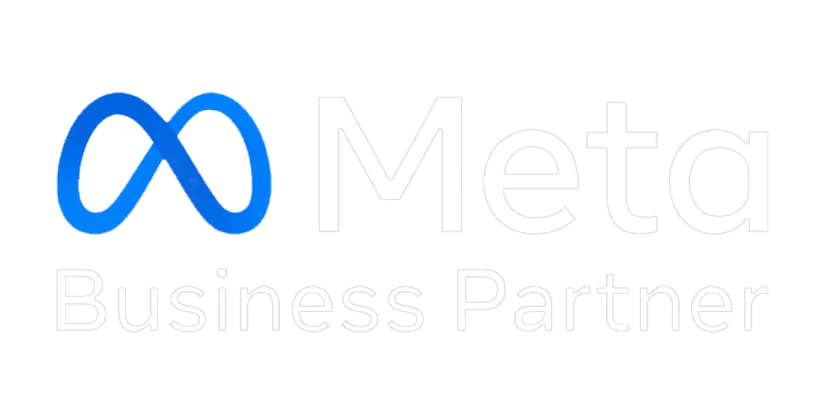Recover Abandoned Carts Faster with WhatsApp Automations
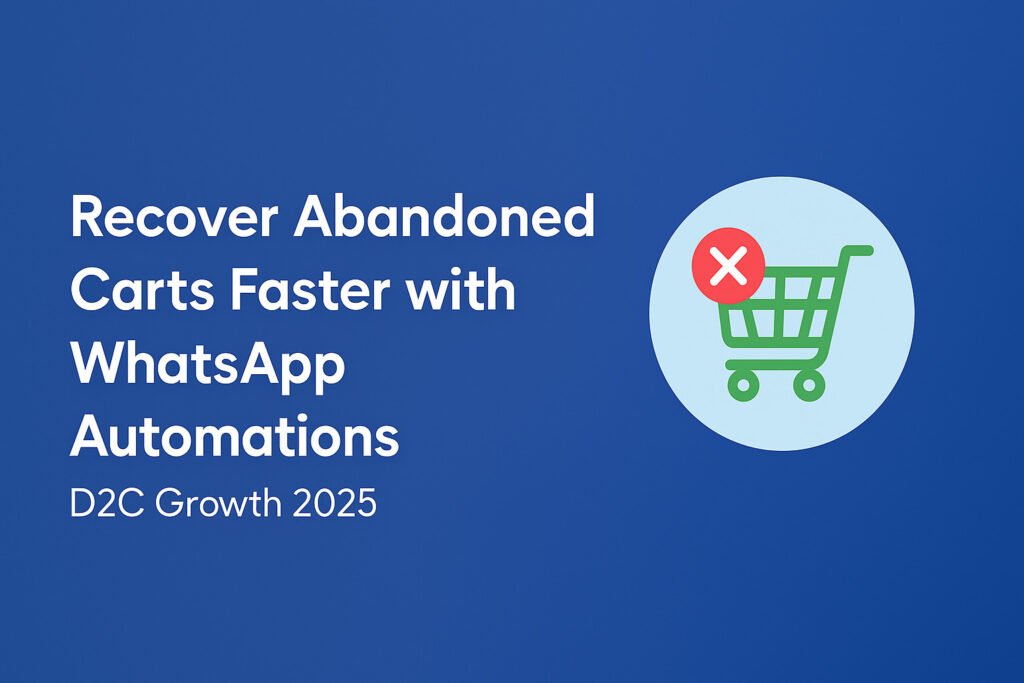
Introduction Cart abandonment is one of the biggest challenges for D2C and eCommerce brands. Customers often add products to their cart but leave without completing the purchase. Traditional recovery methods like email reminders have limited impact, with open rates dropping year after year. That’s where WhatsApp automations come in. With 2+ billion users and high open rates, WhatsApp allows brands to recover abandoned carts faster, increase sales, and provide a personalized shopping experience. Why Do Customers Abandon Carts? Before fixing the issue, it’s important to understand the causes: WhatsApp automations directly address these pain points by providing instant reminders and easy checkout options inside the customer’s favorite chat app. How WhatsApp Automations Recover Abandoned Carts Benefits of WhatsApp Cart Recovery Best Practices for D2C Brands GEO Relevance – Why This Matters for Indian D2C Brands In India, where Cash on Delivery (COD) is still a preferred payment method, WhatsApp cart recovery plays a critical role. Brands can: This makes WhatsApp the most effective cart recovery channel for D2C brands targeting Indian and emerging markets. Conclusion Recovering abandoned carts faster is no longer just about sending emails. With WhatsApp automations, D2C brands can directly engage customers, simplify checkout, and reduce losses. In 2025, the brands that use WhatsApp smartly will recover more revenue, reduce RTO, and build long-term customer loyalty. FAQs Q1. What is WhatsApp cart recovery? It is the process of sending automated WhatsApp reminders to customers who abandoned their carts, nudging them to complete their purchase. Q2. Why is WhatsApp better than email for cart recovery? WhatsApp messages have 80–90% open rates compared to 15–20% for emails, making them more effective. Q3. Can I send cart reminders in multiple languages? Yes. WhatsApp templates can be created in English, Hinglish, or regional languages to connect better with your audience. Q4. Does WhatsApp cart recovery work for COD orders? Absolutely. You can verify COD orders and encourage prepaid conversions, reducing RTO significantly. Q5. Which platforms integrate with WhatsApp automations? Shopify, WooCommerce, and custom-built eCommerce platforms can all integrate with WhatsApp Business API for automated cart recovery.
How D2C Brands Can Dominate Online Sales with WhatsApp Automation in 2025
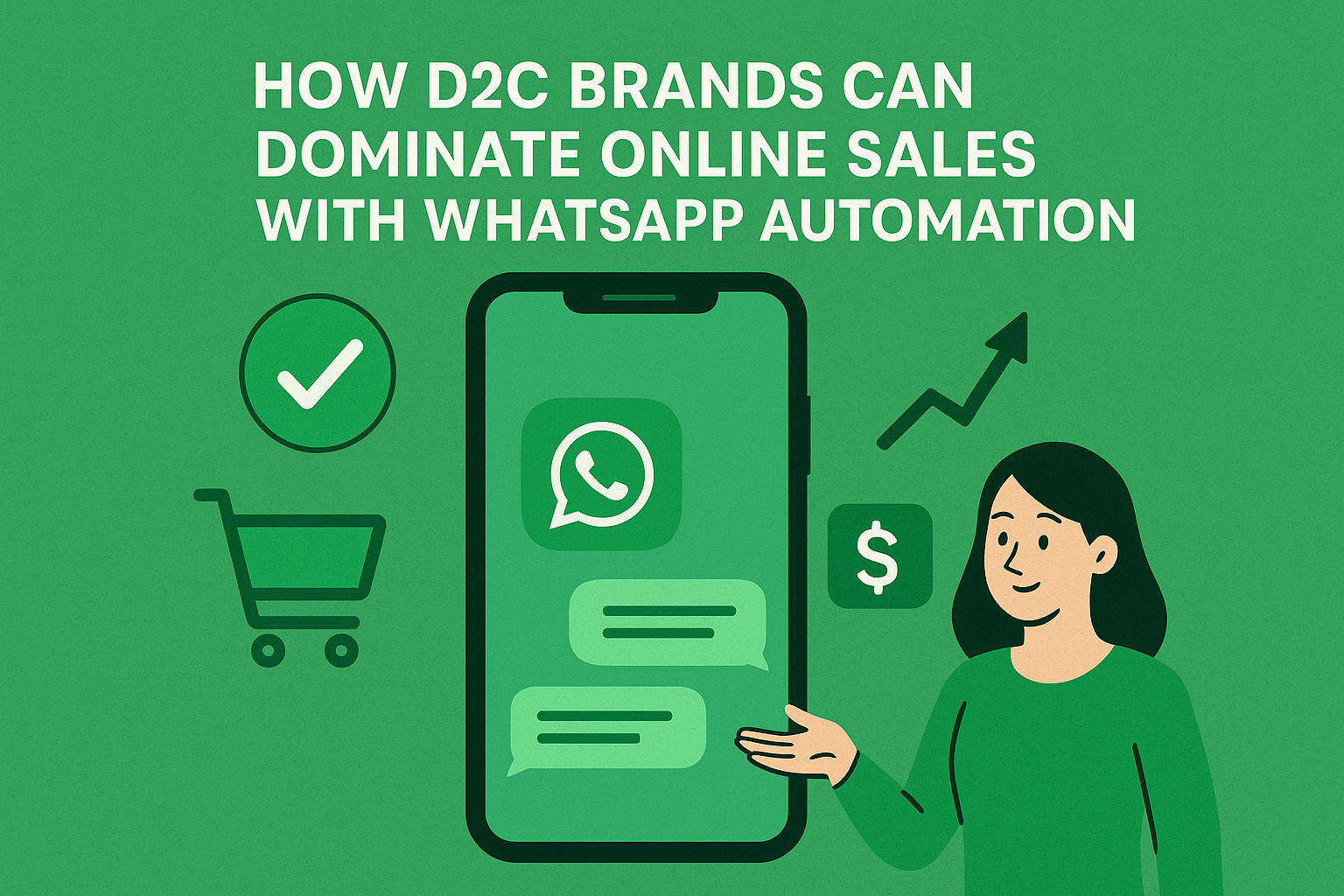
Introduction The direct-to-consumer (D2C) landscape is evolving faster than ever. With rising ad costs, crowded marketplaces, and demanding consumers, D2C brands must find smarter, more personal ways to engage buyers. Enter WhatsApp automation—a powerful channel that blends personalization, automation, and trust. With 98% open rates and lightning-fast engagement, WhatsApp has become more than just a messaging app—it’s a sales powerhouse for D2C businesses ready to dominate in 2025. Why WhatsApp Should Be at the Core of Your D2C Strategy For D2C brands, WhatsApp isn’t just another marketing channel—it’s a direct line to loyal customers. Key Benefits of WhatsApp Automation for D2C Brands 1. Instant Engagement Automated replies and chatbots handle FAQs, product questions, and customer support 24/7, freeing up human teams to focus on higher-value interactions. 2. Seamless Order Communication From order confirmations to shipping updates, WhatsApp ensures customers are informed in real time—reducing anxiety and boosting satisfaction. 3. Conversion Powerhouse Brands report 3× higher conversions through WhatsApp campaigns compared to email, with ROI numbers reaching as high as 300%. 4. Personalization & Retention Behavior-driven campaigns deliver personalized product recommendations, exclusive offers, and loyalty programs that keep customers coming back. 5. Cost-Effective Growth With lower messaging costs than SMS and no reliance on email algorithms, WhatsApp offers an efficient way to scale globally. Core Use Cases That Drive Sales Real-World Success Stories These aren’t outliers—they’re proof of WhatsApp’s unmatched power for D2C growth. Challenges to Navigate 5-Step Roadmap for D2C Brands
WhatsApp Business API: A Game-Changer for D2C Customer Engagement
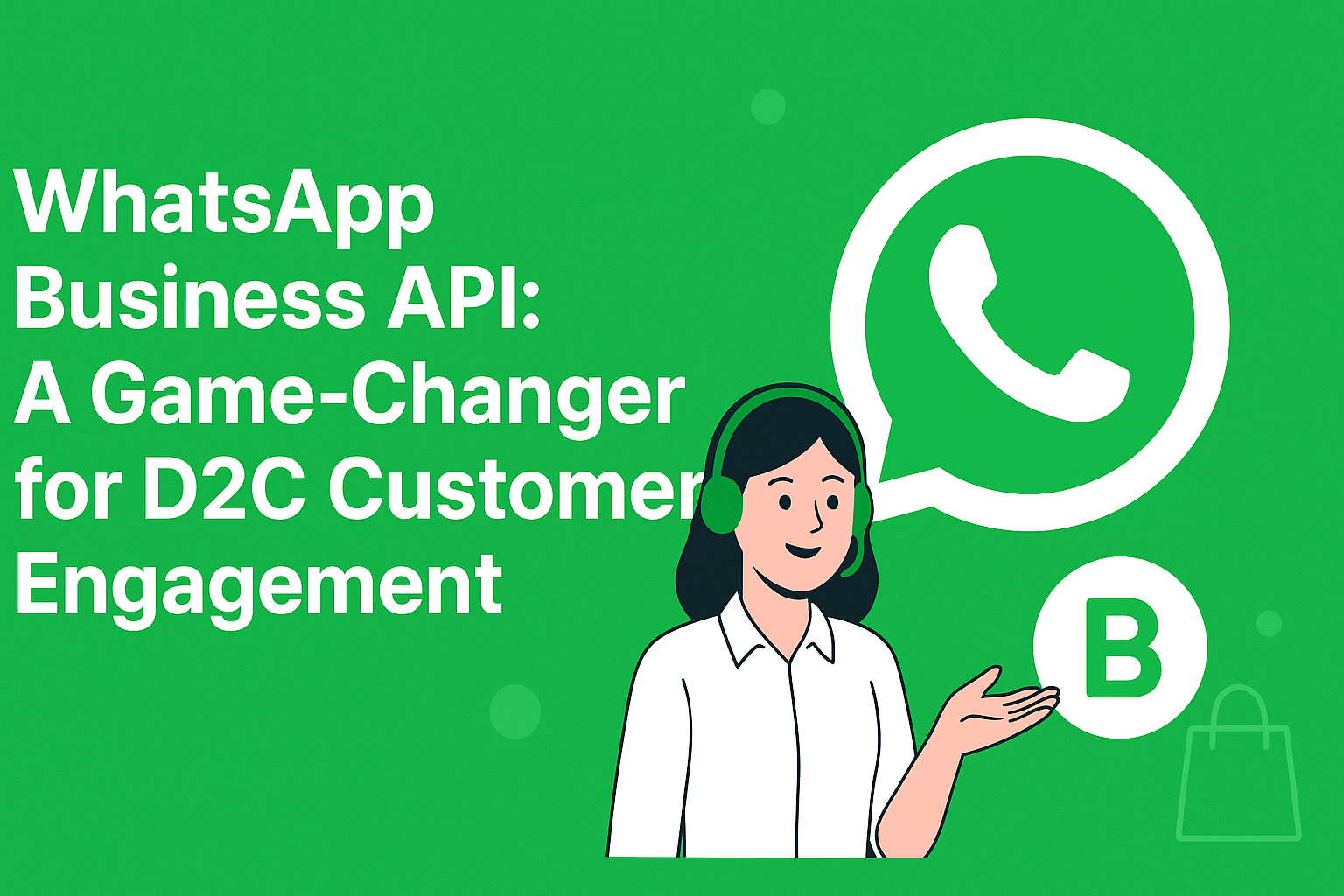
Introduction In today’s direct-to-consumer (D2C) marketplace, personalized, instant communication isn’t just a bonus—it’s a necessity. With over 2.78 billion global users and message open rates hitting 98%, WhatsApp Business API has become a powerful tool for brands seeking to deepen relationships, increase conversions, and deliver seamless customer experiences. Why WhatsApp Business API Matters for D2C Unmatched Engagement Metrics A Trusted, Personal Channel Customers trust WhatsApp as a private, encrypted space—perfect for building authentic brand connections without the clutter of other marketing channels. Core Features That Enable Engagement 1. Real-Time Two-Way Messaging Turn every customer interaction into a conversation. Whether answering product questions or resolving issues, responses feel immediate—like chatting with an in-store representative. 2. Rich Media & Interactive Elements Send images, videos, product catalogs, quick-reply buttons, and list messages, making your conversations engaging and visually appealing. 3. Automation & Chatbots 4. Personalization & Targeted Messaging Leverage customer purchase history and behavior to send: 5. Seamless Payments & Catalog Browsing Enable customers to browse products, request information, and even pay directly through WhatsApp. 6. Global Reach at Lower Costs Operate internationally with internet-based messaging—cheaper and more effective than SMS or traditional ads. Business Growth & ROI Impact Real-World D2C Use Cases Conclusion For D2C brands, WhatsApp Business API isn’t just a messaging platform—it’s a sales and engagement powerhouse. With automation, personalization, and global reach, it offers brands the ability to turn conversations into conversions at scale. If you’re ready to unlock the full potential of WhatsApp for your D2C strategy, explore integration with your tech stack or contact TheBotMode for expert implementation.
The Complete Guide to Building WhatsApp Flows Without Coding
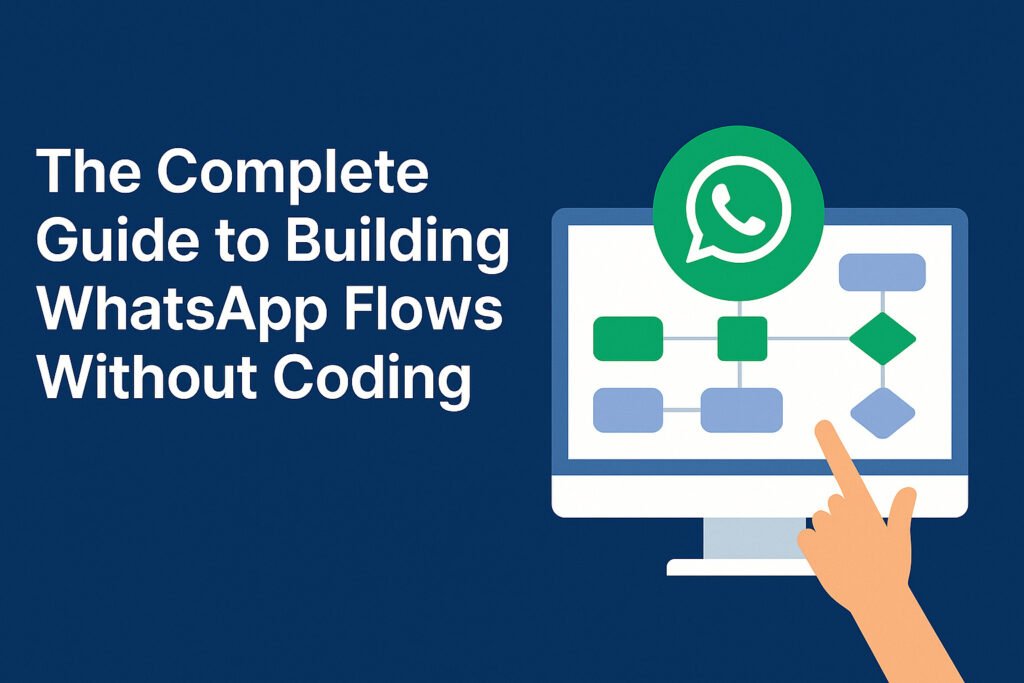
Introduction For every D2C brand, WhatsApp has become more than a messaging platform—it’s now the most powerful tool for sales, customer support, and retention. But the biggest challenge most founders face is: “Do I need a developer to build WhatsApp automation?” The good news? You don’t. With no-code tools like TheBotMode, you can design customer journeys, automate campaigns, and recover lost sales—all without writing a single line of code. This guide will show you exactly how to build WhatsApp flows without coding, step by step. Why D2C Brands Need WhatsApp Flows D2C growth depends on personalization and timing. A well-structured WhatsApp flow ensures: Instead of sending random messages, flows automate these touchpoints intelligently. What is a WhatsApp Flow? A WhatsApp flow is a pre-designed customer journey with triggers, messages, and actions. Example: This flow runs automatically—saving your team’s time while boosting conversions. How to Build WhatsApp Flows Without Coding 1. Choose a No-Code WhatsApp Automation Tool Select a platform like TheBotMode that connects directly with the WhatsApp Business API and gives you a drag-and-drop flow builder. 2. Define Your Use Cases Identify which customer journeys matter most: 3. Use Templates for Fast Setup WhatsApp requires approved templates. With TheBotMode, you can: 4. Drag, Drop, and Connect Build flows visually: 5. Test and Launch Preview flows in WhatsApp before going live. Once approved, your automation runs 24/7. Benefits of No-Code WhatsApp Flow Builders for D2C GEO Angle: Why This Matters for Indian D2C Brands In India, where COD is still 60–70% of all orders, WhatsApp flows help brands verify numbers, confirm intent, and reduce RTO drastically. Plus, with WhatsApp API pricing in INR (₹0.78 for marketing, ₹0.11 for utility), it’s cheaper than SMS or email for engagement. Conclusion D2C brands don’t need coding expertise to harness WhatsApp’s full potential. With no-code tools like TheBotMode, you can design customer journeys that: Now is the time to move beyond manual campaigns and unlock the power of automated WhatsApp flows—without coding. FAQs Q1. Do I need a developer to create WhatsApp flows? No, with no-code tools like TheBotMode, you can design flows using a drag-and-drop interface. Q2. Can WhatsApp flows help reduce COD RTO? Yes, COD verification flows confirm intent before shipping, saving brands from unnecessary returns. Q3. How long does it take to set up a WhatsApp flow? Most flows like cart recovery or order confirmation can be set up in less than an hour. Q4. Is WhatsApp cheaper than SMS for D2C engagement? Yes, with API pricing, WhatsApp is often more cost-effective than bulk SMS in India.
The Rise of Conversational Commerce: How WhatsApp Is Shaping eCommerce
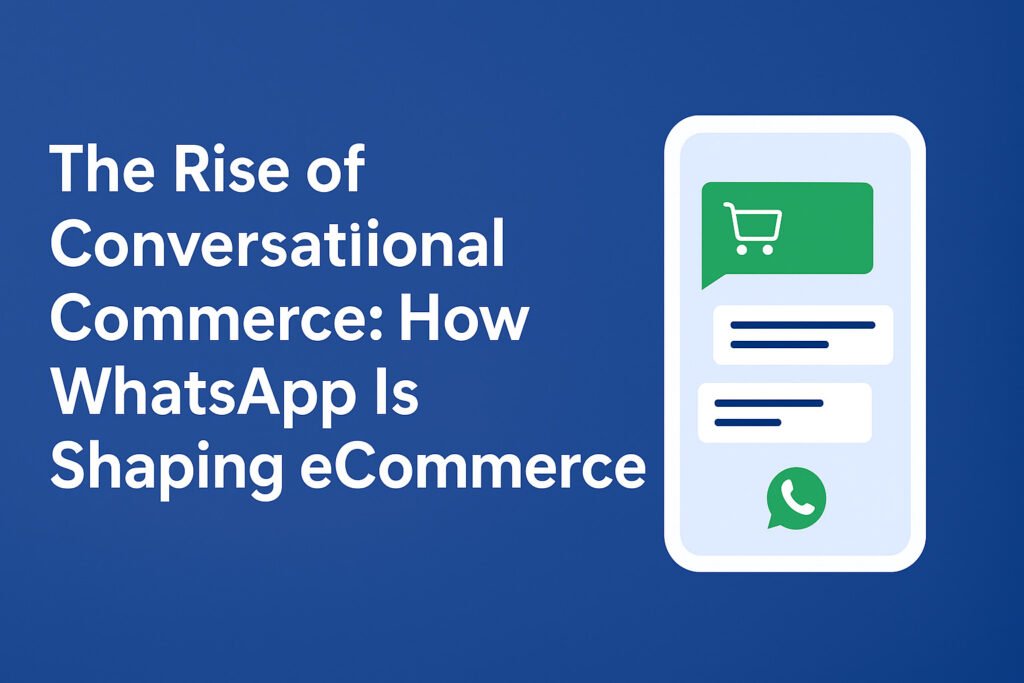
Introduction eCommerce is no longer just about websites and apps. In 2025, the fastest-growing sales channel is conversational commerce—selling directly through chat. Among all platforms, WhatsApp leads the way with over 2 billion active users and a seamless shopping experience built into everyday conversations. From product discovery to payment, WhatsApp enables businesses to turn conversations into conversions. For D2C brands, this is a game-changer. What is Conversational Commerce? Conversational commerce refers to the practice of selling through two-way, interactive conversations with customers via messaging platforms. Instead of static ads or emails, brands use chat to: It combines engagement + convenience + trust, making shopping frictionless. Why WhatsApp is Leading Conversational Commerce Key Use Cases for eCommerce Brands Benefits of Conversational Commerce on WhatsApp Future of WhatsApp in eCommerce WhatsApp is evolving beyond chat into a full shopping ecosystem. With native payment gateways, AI-powered assistants, and tighter integrations with Shopify and WooCommerce, it is poised to replace traditional channels like SMS and email for direct selling. For D2C brands, adopting conversational commerce on WhatsApp is no longer optional—it’s the next big growth lever. Conclusion The rise of conversational commerce proves one thing: customers prefer conversations over clicks. WhatsApp brings the human touch back into digital shopping, bridging the gap between brands and buyers. For eCommerce businesses that want to grow in 2025 and beyond, WhatsApp is not just a support channel—it’s the future of sales. FAQs Q1. What is conversational commerce? Conversational commerce is the practice of selling products and services via interactive chat platforms like WhatsApp, where customers can browse, ask questions, and buy seamlessly. Q2. Why is WhatsApp important for eCommerce? WhatsApp combines massive reach, trust, and integrated shopping features, making it the leading platform for conversational commerce. Q3. Can I sell products directly on WhatsApp? Yes. With WhatsApp Business API, you can showcase a catalog, send product carousels, share payment links, and complete the transaction inside WhatsApp. Q4. How does WhatsApp reduce RTO in COD orders? Brands can verify COD orders via WhatsApp and offer prepaid payment links, reducing cancellations and returns. Q5. What tools are needed to start conversational commerce on WhatsApp? You need access to the WhatsApp Business API, a Business Solution Provider (BSP), and an automation tool or chatbot to scale conversations.
WhatsApp Marketing Strategies for D2C Brands: Unlock Growth with TheBotmode
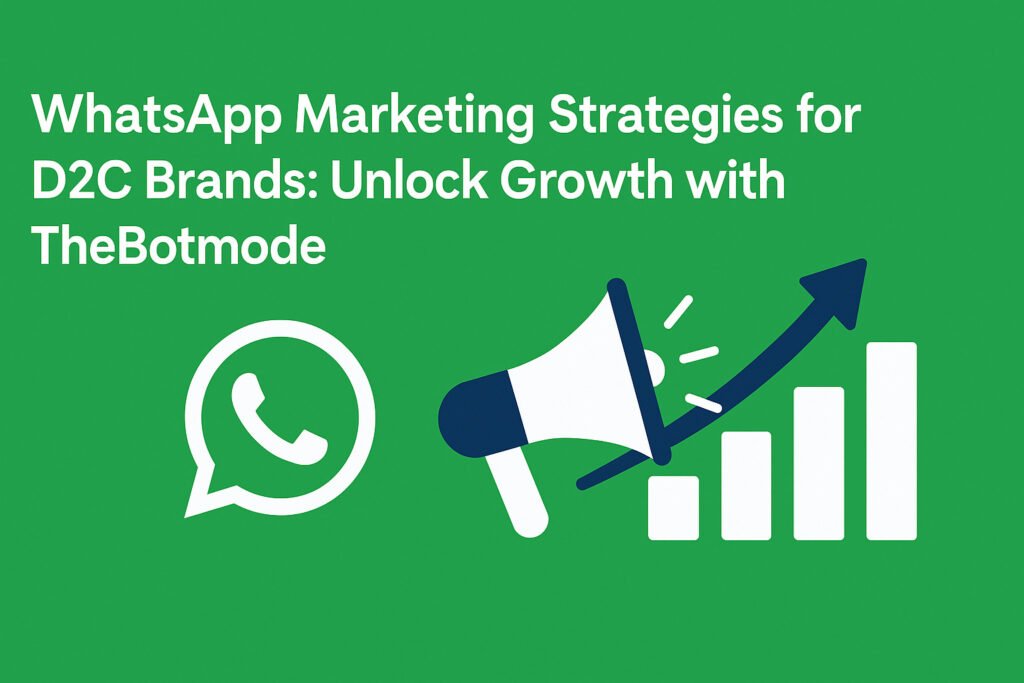
WhatsApp has evolved far beyond a simple messaging app. With over 2 billion users, it is now an essential tool for businesses to connect, engage, and convert customers. For D2C (Direct-to-Consumer) brands, WhatsApp Marketing is not just an option—it’s a powerful channel to drive meaningful customer relationships and increase sales. At TheBotmode, we specialize in helping businesses unlock the full potential of WhatsApp Marketing through innovative strategies designed to deliver real results. In this guide, you’ll discover powerful WhatsApp Marketing strategies to elevate your brand’s communication, drive customer engagement, and boost ROI. What is WhatsApp Marketing for D2C Brands? WhatsApp Marketing is a form of direct messaging that allows D2C brands to communicate with their customers via WhatsApp. It involves sending personalized promotional messages, updates, reminders, customer support, and even processing orders—all within a single app. Using features like the WhatsApp Business API, automated chatbots, and broadcast messaging, businesses can scale communication while maintaining a personal touch, which is crucial for D2C brands aiming for higher customer engagement. Why WhatsApp Marketing is Essential for D2C Brands Whether you’re a startup or an established enterprise, WhatsApp Marketing strategies can help you create authentic relationships with your customers, improve retention, and drive measurable results. Top WhatsApp Marketing Strategies That Actually Work for D2C Brands 1. Use WhatsApp Business API for Scalability For D2C brands looking to handle thousands of messages daily, the WhatsApp Business API is a game-changer. It enables automation, integrates seamlessly with your CRM, and supports chatbot functionality. At TheBotmode, we help you set up and manage the API effortlessly, ensuring that your brand can scale communication without losing its personal touch. 2. Set Up Automated WhatsApp Chatbots Don’t let your customers wait. AI-powered chatbots engage leads instantly, answer FAQs, and even guide users through the sales funnel 24/7. This strategy is crucial for lead nurturing and customer support, allowing D2C brands to keep customers engaged and satisfied. 3. Segment and Personalize Your Broadcast Lists Avoid sounding like spam by segmenting your audience based on behavior, location, or purchase history. Personalized broadcast messages see higher engagement and conversions. Tailor your message for each segment, ensuring your communication feels relevant and timely. 4. Leverage Interactive Buttons & Quick Replies Make your messages more actionable by adding clickable buttons, product catalogs, and quick replies. These interactive features not only improve the user experience but also boost CTR (Click-Through Rates), encouraging customers to take action immediately. 5. Integrate WhatsApp With Your Website & Ads Add Click-to-WhatsApp buttons on your website or run Facebook/Instagram ads that open directly in WhatsApp. This seamless transition helps improve conversions and simplifies lead capture, making it easier for customers to reach out and inquire about products or services. How TheBotmode Helps with WhatsApp Marketing At TheBotmode, we provide end-to-end WhatsApp Marketing services tailored to your business goals. Whether it’s chatbot setup, campaign management, API integration, or analytics, we’ve got you covered. Our platform is user-friendly, scalable, and backed by a team of marketing professionals who live and breathe WhatsApp Marketing strategies. We work with you to implement effective strategies, track performance, and continuously optimize your campaigns for better results. FAQs Q1. Is WhatsApp Marketing Legal? Yes, WhatsApp Marketing is legal as long as you obtain user consent before messaging and follow WhatsApp’s commerce policy. It’s important to comply with WhatsApp’s guidelines to avoid account suspension. Q2. Can Small D2C Businesses Use WhatsApp Marketing? Absolutely! Small D2C businesses can use the WhatsApp Business App or API to easily reach their audience and enhance customer communication. Q3. What Types of Messages Can I Send via WhatsApp Marketing? You can send a variety of messages, including order updates, promotions, product catalogs, reminders, surveys, and customer service messages. The key is to keep the content personalized and relevant to the recipient. Q4. How is TheBotmode Different from Other WhatsApp Marketing Platforms? TheBotmode stands out with its user-friendly dashboard, powerful automation tools, and expert support. We provide a no-code platform that allows business owners and marketers to manage campaigns without a technical background. Q5. Do I Need a Developer to Use TheBotmode? Not at all! Our platform is designed to be no-code, making it accessible to marketers and business owners without the need for technical expertise. Our team is also available to offer support whenever needed. Conclusion: Start Your WhatsApp Marketing Journey Today WhatsApp Marketing offers a huge opportunity for D2C brands to enhance engagement, streamline customer service, and boost conversions. With TheBotmode by your side, you can easily implement these powerful strategies, scale your communication, and achieve your marketing goals. Ready to unlock the power of WhatsApp Marketing? Start growing your business today with TheBotmode!
Customer Support Efficiency with WhatsApp Chatbots
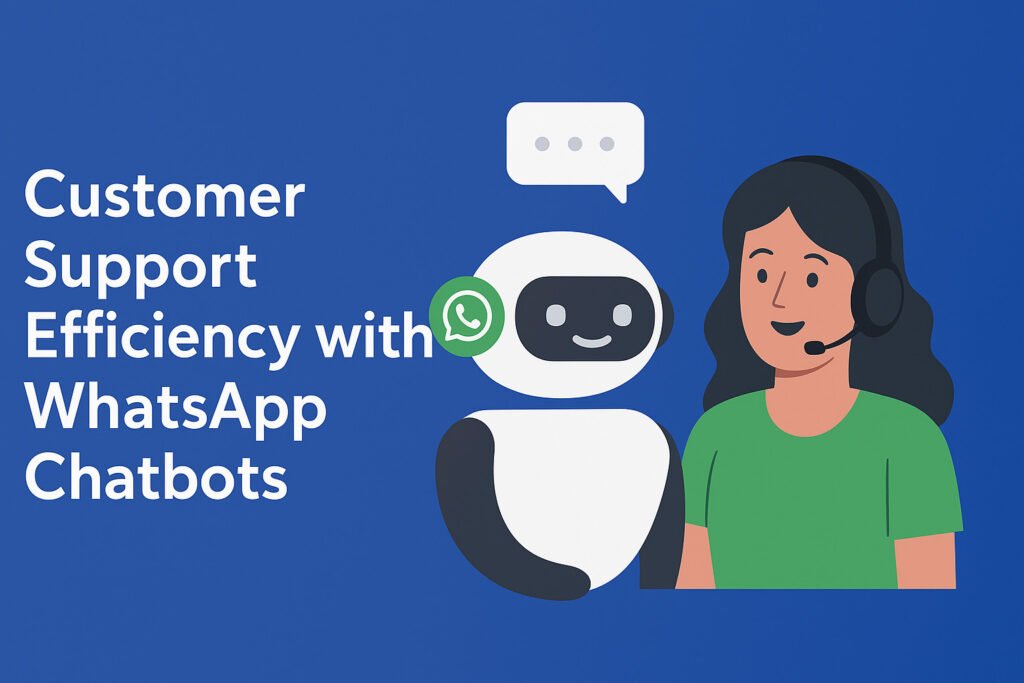
How D2C Brands Can Grow Customer Support Efficiency with WhatsApp Chatbots Introduction For direct-to-consumer (D2C) brands, the pressure to deliver fast, personalized, and consistent customer support is at an all-time high. Customers expect instant replies, 24/7 service, and a seamless experience. The challenge? Doing it all at scale—without ballooning support costs. That’s where WhatsApp chatbots come in. With over 2 billion active users and an open rate of 98%, WhatsApp is the platform where your customers already are. Integrating chatbots into your WhatsApp support strategy empowers your brand to deliver high-efficiency support at scale, without sacrificing personalization. Why WhatsApp Chatbots Matter for D2C Brands WhatsApp isn’t just another messaging app—it’s a customer engagement goldmine. Here’s why: For D2C brands, WhatsApp offers a frictionless channel to manage support, orders, updates, and more—all in one conversational thread. Core Benefits for Support Efficiency 24/7 Instant Responses WhatsApp chatbots never sleep. They can instantly handle FAQs, order inquiries, returns, and common service issues around the clock—no wait time, no frustration. Scalability Without Staffing Increases Your support team can only handle so many queries. A chatbot can handle hundreds simultaneously, reducing wait times and improving resolution rates without growing headcount. Automation Cuts Costs & Boosts Productivity Automating repetitive tasks like tracking updates, FAQs, or product inquiries can save up to 30% in support costs, letting your human agents focus on higher-value conversations. Personalization & Contextual Support at Scale With access to customer data like order history, preferences, and name, WhatsApp chatbots provide contextual, human-like experiences, boosting customer satisfaction while still being automated. Key Features & Best Practices to Implement FAQ Knowledge Base & NLP Integration Train your chatbot with a well-curated FAQ and Natural Language Processing (NLP) for accurate, conversational responses that feel natural. Seamless Chatbot-to-Human Handover When issues get complex, your bot should instantly escalate to a human agent—without losing the context—ensuring a smooth, frustration-free transition. Order Tracking and Real-Time Updates Let customers check their order status, shipping progress, and delivery ETA directly in WhatsApp—automatically and in real-time. Soliciting Feedback & Capturing Insights Use post-conversation surveys or rating prompts within the chatbot to collect valuable feedback and continuously optimize the customer experience. Conversational Commerce & Recommendations Drive revenue during support conversations. WhatsApp chatbots can make personalized product recommendations, recover abandoned carts, and upsell based on chat context. Integrating with CRM & Helpdesk Systems For seamless continuity, integrate WhatsApp with your CRM and helpdesk platforms. This keeps every interaction logged and accessible, ensuring full context across all support touchpoints. Implementation Roadmap for D2C Brands Conclusion For D2C brands striving to scale efficiently, WhatsApp chatbots are no longer a nice-to-have—they’re essential. They deliver instant, automated, and personalized support while slashing costs and improving customer satisfaction. With the right strategy and tools, your brand can handle thousands of conversations without missing a beat. Want to start optimizing your customer service and support? 👉 Explore our guide here.
Meta’s New WhatsApp Pricing Explained: What It Means for Your Brand
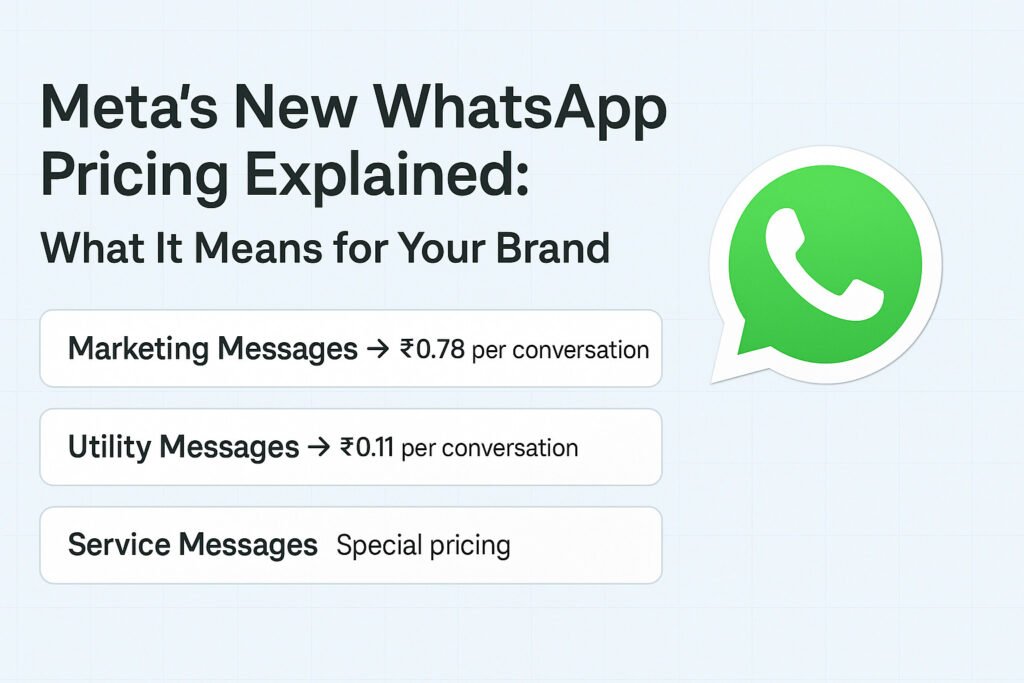
Introduction WhatsApp has become the go-to channel for D2C brands and eCommerce businesses. But as usage grows, Meta continues to refine its WhatsApp Business API pricing model. In July 2025, Meta announced new pricing changes that directly impact how brands plan customer engagement and marketing campaigns. If you’re running WhatsApp for customer support, cart recovery, or promotions, understanding these updates is critical for managing ROI. Let’s break it down in simple terms. WhatsApp Pricing 2025: What Changed? Meta now categorizes conversations into different types, each with a specific charge per conversation (usually 24 hours long). Example (India Market – July 2025): (Pricing varies by country and by partner platforms.) What This Means for Your Brand Strategies to Manage WhatsApp Costs in 2025 Global Impact: Not Just India While pricing numbers differ across regions, the overall pattern is consistent: marketing conversations cost more, utility conversations are cost-effective. D2C brands worldwide must adjust communication strategies to align with these updates. Conclusion Meta’s new WhatsApp pricing update is not a setback but a shift toward smarter engagement. By leveraging automation, personalization, and cost-effective transactional messaging, D2C brands can maintain strong ROI while managing costs. In 2025, WhatsApp remains the most powerful channel for direct-to-consumer commerce. The brands that adapt quickly to the new pricing model will continue to win. FAQs Q1. What is the new WhatsApp pricing in India (2025)? As of July 2025, marketing messages cost ₹0.78 per conversation, while utility messages cost ₹0.11 per conversation. Q2. What counts as a marketing conversation? Any promotional or sales-driven message, such as offers, discounts, or new product launches, falls under marketing. Q3. What counts as a utility conversation? Transactional updates such as order confirmations, delivery notifications, or COD verifications are considered utility messages. Q4. How long does one WhatsApp conversation last? Meta defines a conversation window as 24 hours from the first message sent by the business. All replies within this window are included in the same charge. Q5. How can D2C brands reduce WhatsApp costs? By segmenting campaigns, prioritizing utility messages, sending messages at the right time, and working with a transparent Business Solution Provider.
WhatsApp Broadcast Messages: A D2C Brand’s Guide to Bulk Marketing

What Is WhatsApp Broadcast? WhatsApp Broadcast allows you to send a single message to multiple recipients at once, without creating a group chat. Unlike WhatsApp Groups, a broadcast message lands in the recipient’s private chat window, preserving a 1:1 feel. This method is ideal for direct-to-consumer (D2C) brands looking to personalize communication at scale while maintaining message privacy. Think of it as email marketing with better open rates and higher intimacy. Broadcasts are frequently confused with WhatsApp Channels or Groups, but they serve different purposes. A broadcast list is your tool for direct bulk messaging without overwhelming your audience. Limitations of the WhatsApp Business App While the WhatsApp Business app does support broadcast messages, it has strict limitations: This makes it unsuitable for D2C brands looking to scale and automate customer communication. Real Risks and Reddit Insights Community reports show that misusing bulk messaging can lead to: To avoid this, follow best practices: Why D2C Brands Should Embrace WhatsApp Broadcast WhatsApp delivers 90%+ open rates, far outpacing email or SMS. For D2C brands, it means: From order updates to loyalty rewards — WhatsApp Broadcast keeps your audience engaged, informed, and buying. FAQs: Answering Voice Search Queries What is broadcast on WhatsApp? A WhatsApp broadcast is a feature that lets you send the same message to multiple people privately — they won’t know it was sent to others. What is WhatsApp bulk messaging? It’s the practice of sending messages in large volumes using WhatsApp Business API and marketing tools, often for promotions or customer updates. Is WhatsApp broadcast private? Yes. Recipients receive it in a private chat and cannot see others on the list. How do I avoid getting banned for WhatsApp bulk messages? Use only opt-in contacts, send compliant messages, and avoid spam-like behavior. Do I need WhatsApp marketing software? Yes, if you want automation, scaling, and analytics, it’s essential for serious D2C campaigns. Conclusion WhatsApp Broadcast is more than a messaging tool — it’s a D2C brand’s secret weapon for scale, personalization, and ROI. When used correctly with the right software and compliance, you can transform customer communication and drive consistent results. 👉 Ready to power up your messaging? Start your journey with TheBotMode WhatsApp Broadcast.
The Psychology of Clicks: Crafting WhatsApp Buttons That Convert

Introduction In the fast-paced world of Direct-to-Consumer (D2C) eCommerce, every click counts. WhatsApp marketing campaigns are no exception — the difference between a 2% and 12% click-through rate (CTR) often lies in one detail: the button. Why?Because buttons are decision triggers. They signal action, reduce hesitation, and create urgency — if done right. The challenge for brands is crafting WhatsApp buttons that are more than just functional — they must be psychologically persuasive. 1. Why Buttons Work: The Science Behind the Click Human brains are wired to respond to clear, actionable prompts. In WhatsApp campaigns, buttons: Example: Instead of a generic “Learn More” button, a coffee brand uses: “Brew My First Cup ☕” Result: CTR increased by 19% because the button connected directly with the product experience. 2. The Anatomy of a High-Converting WhatsApp Button A powerful WhatsApp CTA button should tick these boxes: 3. Leveraging Color Psychology in WhatsApp Buttons Although WhatsApp buttons follow Meta’s default styling, color association in accompanying creatives impacts clicks: Example: A UAE fashion brand paired “Shop the Eid Collection” button with gold-accented banner creatives, boosting CTR by 22% during Ramadan sales. 4. Button Placement & Flow Strategy WhatsApp gives you three main button use cases: Best Practice: Place primary CTAs in the first message of the flow—waiting until the 3rd or 4th message can reduce clicks by up to 40%. 5. Geo-Specific CTA Optimization Different regions respond to different language styles: 6. Testing & Iterating for Higher Conversions The best-performing brands A/B test: Example: A D2C supplements brand in New York tested two CTAs: Conclusion In WhatsApp marketing, buttons aren’t just small UI elements — they’re psychological triggers. The right combination of action-driven copy, urgency, personalization, and regional nuance can transform clicks into conversions. Pro Tip: Track button click metrics in your WhatsApp analytics to understand what truly drives your audience’s actions.













